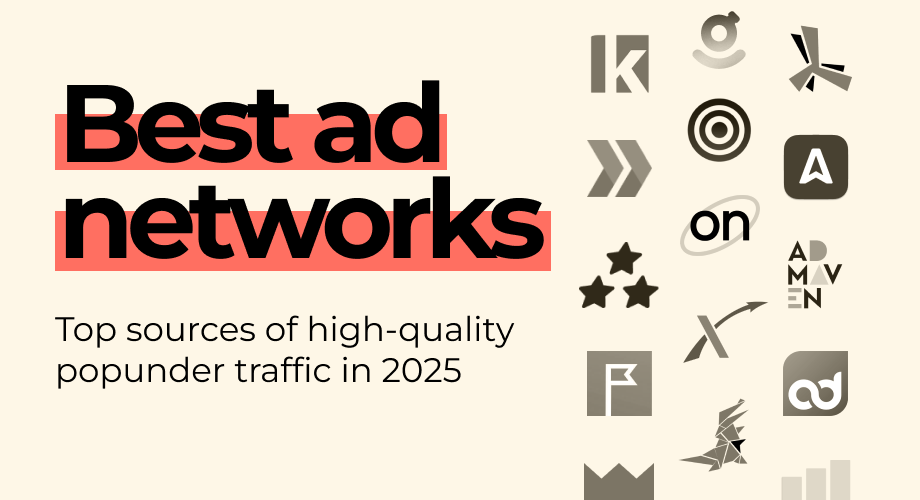A Demand-Side Platform (DSP)
It is an automated system of purchase traffic by auction for advertisers and publishers in real-time bidding (RTB).
This system allows media buyers to manage multiple ad exchange and data exchange accounts through one platform.
So, an automated traffic exchange solution allows publishers and advertisers to sell and buy ad space, namely impressions.
The goal of DSP is to buy ad impressions for the audience at the lowest possible price. Thus, advertisers "buy" users or potential customers, who will click on the advertising and make an action: a purchase of a product, registration on a website, installation of a program, etc. In other words, they buy traffic that will bring a profit.
When the user clicks on the link, the SSP (Supply-side platform) system starts bidding on the DSP side. Based on the information from SSP, DSP generates bids and conducts an RTB launch auction.
Generally, data exchange takes place through interaction with several platforms, the work of which consolidates by using the DSP-manager or Trading Desk. DSP-manager manages data.
On a Trading Desk, an advertiser sets the buyout parameters - the maximum amount of payment for an impression, the frequency of displaying the banner, characteristics of the target audience (social, demographic, etc.). On the Trading Desk, DSP platform compares an offer from SSP with the parameters of the advertising campaign. If an impression may be of interest to an advertiser, the system places a bid.
DSP solution allows automating the process, virtually eliminating the need for manual adjustments. It's helped to make buying advertising cheaper and efficient.
DSP stores data about the advertiser's campaign: targeting, bids, settings, etc.
What is programmatic advertising?
Modern technologies and online services have significantly changed the world of media advertising. Programmatic advertising buying, or "algorithmic advertising buying" through automation and optimization mechanisms, has allowed a new look at Internet marketing. What is it? Let’s propose to talk about this in more detail.
Programmatic advertising is a method of purchasing targeted digital advertising on a number of sites in real-time, with payment only for contact with a specific target user, following the targeting chosen by the advertiser.
The most major function of programmatic advertising is the ability to optimize advertising campaigns for a specific user online following various parameters. Using this technology for a number of tasks helps prevent disruptions in many processes, such as sending insertion orders or tagging ads, and, accordingly, reduce costs. But people (media buyers, advertisers) will still be in the business of optimizing campaigns and planning strategies.
This tool made it possible to exclude the human factor from a variety of processes as much as possible, thereby increasing the efficiency of advertising procurement.
And, of course, the most valuable property of programmatic buying is saving time that salespeople and marketers can now spend on other intellectual tasks.
What is the structure of programmatic buying?
- Data Suppliers are data providers. They are divided into two groups: those who offer collected audience, segmented from processed data (Processed Data Suppliers), and those who provide raw data (Raw Data Suppliers).
- SSP (Supply Side platform) - platforms for selling ad space.
- Ad Exchange is an advertising exchange that puts impressions for visitors of ad networks and publishers websites for sale, chooses a bid from the DSP, then announces the winner.
- Ad Network is an advertising network. It contains information about advertising and manages its impressions using an ad server (Ad Server), which sends ads to the publisher's site, counts the number of impressions, clicks, and manages campaign optimization.
Ad Exchanges and Ad Networks provide a link between sites and advertisers that allows them to sell ads to thousands of connected sites. They collect media sites into a single pool and facilitate the placement process while accumulating expertise and allowing you to select the best options to meet demand.
- DSP (Demand Side Platform), a tool for programmatic buying that directly interacts with the SSP (Supply Side Platform), advertising networks (Ad Network), advertising exchanges (Ad Exchange) and sites (Publishers).
A Demand-Side Platform is a solution, which enables to automate the process, make it more efficient and cheaper by eliminating most of the manual settings.
In conclusion, several main tasks can be identified that characterize the overall operation of the DSP:
- audience targeting by a variety of criteria;
- working with multiple SSPs, where publisher sites sell their ad space;
- displaying statistics of traffic purchases in real-time, which makes it possible to optimize the budget and abandon ineffective traffic sources;
- creation of reports for each impression, including all advertising sites and statistics of their effectiveness;
- automatic optimization of the advertiser's budget.


